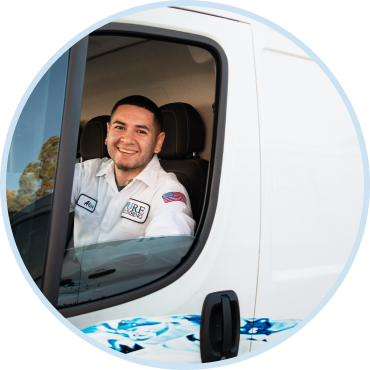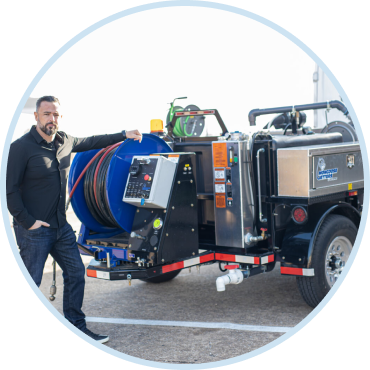Schedule Pure Plumbing for a plumbing camera inspection in Plano, TX, if you’re experiencing issues with your drains. That includes your toilets, sink, shower, and tub drains. A standard camera inspection can reveal local issues, such as a clogged kitchen sink drain. A sewer line camera inspection can reveal obstructions much deeper in your plumbing system.
Plumbing Camera Inspections in Plano, TX
With Camera Inspection

Plumbing Camera Inspection Plano Experts
If you have standing water in a tub or sink, you have an obvious clog. That said, there are often signs of a problem long before you get to that point. Water will drain slowly. You may notice sounds as the water makes its way through the blockages.
There may be unpleasant smells, too. Obstructions often trap food that decays and releases gases into your home. When a drain is functioning well, the trap prevents those gases from leaving the pipe.
You may have a blockage that’s deeper in the system and not specific to any one drain. In that scenario, there will often be additional signs. Homeowners will often, for instance, experience multiple slow drains throughout the home.
You may notice gurgling from your toilets as well as your drains. It’s also not unusual for toilet bowl water levels to rise and fall. This can occur even at times when no one has used the toilet recently.
An inspection involves the use of a high-definition camera. That camera attaches to a strong yet flexible cable that a plumber can thread through the system. The cable we use for kitchen and bathroom inspections is relatively lightweight.
For a sewer line inspection, we’ll use a heavier cable that can make it much deeper into the system. In either case, the camera transmits video to a monitor through which we can view the problem in detail.
For local clogs, the usual solution is to snake the drain. This is where we’ll use a drain auger to clear the blockage. There are both manual and motorized augers available. In some cases, such as limescale accumulation, it may be necessary to replace a pipe or other components.
For sewer blockages, we’ll often perform hydro jetting instead. This involves the use of a high volume of water under pressure. That pressurized stream is strong enough to break up invasive tree roots and old grease. Better yet, it can do that without causing damage to an otherwise uncompromised sewer pipe.
- Foul odors
- Slow drainage
- Standing water
- Overflowing toilets
- Gurgling drains and toilets

Sewer Line Camera Inspection in Plano
Pure Plumbing is a plumbing contractor with over a decade of experience serving Plano homeowners. We employ licensed plumbers who specialize in sewer line camera inspection and other plumbing inspection methods.
Our team is available around the clock for emergency services. Our company also offers a maintenance plan that provides many perks, including a discount on camera inspections and other services.
Are you experiencing problems with your home’s drain and potentially sewer line? Contact Pure Plumbing at your convenience to schedule the plumbing camera inspection Plano residents recommend.
Pure Plumbing
©2025 Pure Plumbing. License: #M-43576. Web Design and Internet Marketing by RYNO Strategic Solutions
All Rights Reserved Privacy Policy Terms & Conditions